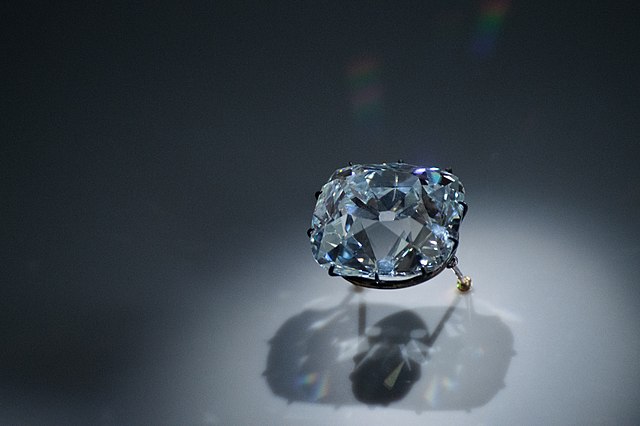
The Louvre Robbers Left Behind This $60 Million Diamond During Their Jewel Heist—Supposedly Because It’s ‘Cursed’
We, as a society, still haven’t recovered (spiritually, of course) from this week’s Louvre jewel heist, where thieves managed to get into the museum in broad daylight and leave with their spoils within eight minutes. It’s a pretty impressive feat and a story that sounds like something out of a movie: they dressed as constructions workers, climbed up a crane to one of the windows, used chainsaws to cut open the cases that held the royal crown jewels, took eight different pieces, and then made their getaway on scooters.
Authorities can’t seem to wrap their heads around how this happened, but another mystery also left them with plenty of questions: While the robbers took most of the jewels in the case, they left behind one priceless diamond.
While there’s no real way to know why this particular jewel known as Regent Diamond was left behind (and we’re unlikely to get the story even if the thieves are caught), this 141 karat diamond has a long and treacherous history—and is actually believed by some to be cursed.
Legend has it that it was first found around 1700 by an enslaved man in India, who hid the diamond in his own leg wound as he fled for safety. He later told an English captain about the diamond, offering to split the proceeds of the sale of the diamond as long as the captain could get him out safely, and while the captain originally agreed to the deal, he is said to have later murdered the enslaved man and taken the diamond for himself.
Since then, the Regent Diamond has changed plenty of hands, but its most notably belonged to important figures of French nobility—especially those with tragic stories, including Louis XVI, his wife Marie Antoinette, and Napoleon Bonaparte.
Most of us know how the story went for these historical figures—Louis XVI and Marie Antoinette were executed during the French Revolution, and Napoleon Bonaparte was exiled from France twice, left to die on his own on an island.
Later, the diamond was passed down to Charles X, who was overthrown and exiled, and then it was given to Napoleon III, who suffered a similar fate.
So, is the Regent Diamond really cursed? Who’s to say—you could probably argue that royalty in itself is a curse or that human greed will often lead to tragedy. But it’s fun to think there might be some mythological reason why the diamond was overlooked, adding a little extra storybook flair to a real-life event that feels more fiction than reality.











